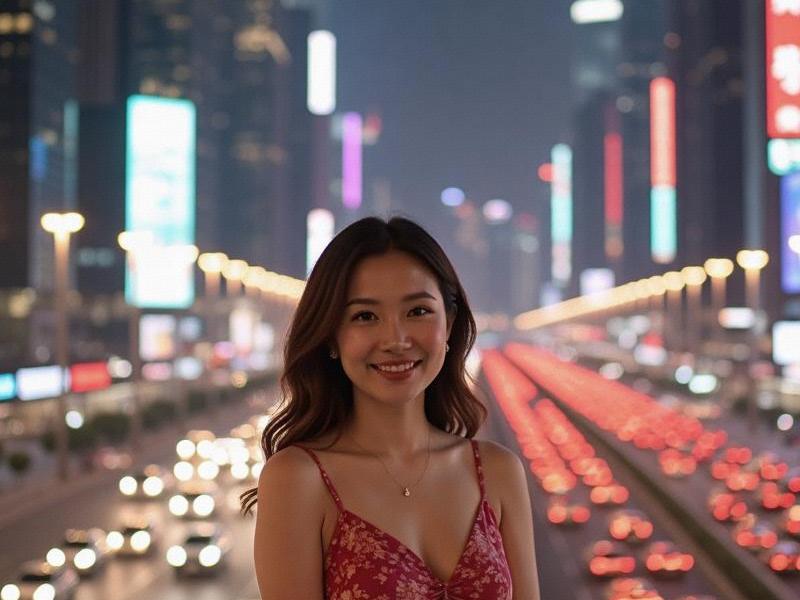Shanghai's Creative Awakening: How China's Gateway City is Reinventing Its Cultural Identity
⏱ 2025-06-12 00:54 🔖 爱上海同城论坛
📢0℃

The scent of oil paint mixes with the aroma of freshly brewed coffee in Shanghai's M50 art district, where converted textile mills now house some of Asia's most exciting contemporary galleries. This sensory juxtaposition encapsulates Shanghai's cultural metamorphosis - a city once known primarily as China's financial capital now challenging Hong Kong and Tokyo as the region's creative nexus.
Section 1: The Architecture of Inspiration
Shanghai's physical transformation:
- 92 industrial spaces repurposed as cultural venues since 2020
- 17 new museum openings in 2024 alone
- The West Bund Cultural Corridor now spans 9.4 kilometers
爱上海最新论坛
Section 2: The New Creative Economy
Economic impact measurements:
- Cultural industries contribute 12.8% to Shanghai's GDP (up from 7% in 2015)
- Design sector employment grew by 38% in three years
- Art auction sales surpassed $950 million in 2024
爱上海419论坛
Section 3: The Talent Magnet
Demographic shifts:
- 42% increase in foreign artists establishing studios since visa reforms
- 68 new international galleries opened branches since 2022
- Local art school applications up 210% since pandemic
上海娱乐联盟
Section 4: Tradition Meets Disruption
Innovative cultural hybrids:
- Digital recreations of Shanghai's 1930s jazz scene
- AI-assisted traditional Chinese painting exhibitions
- VR experiences blending qipao fashion with cyberpunk aesthetics
"Shanghai has always been China's window to the world, but now it's becoming the world's window to Chinese creativity," observes cultural critic Zhang Wei. The city's ability to honor its complex past while fearlessly experimenting positions it uniquely in the global cultural landscape. As Shanghai prepares to host the 2026 World Expo focusing on "Cultural Sustainability," its greatest exhibition may be the city itself - a living testament to how urban centers can cultivate creativity while maintaining commercial vitality.
Shanghai 2040: The Vertical City Revolution Redefining Urban Living"Neo-Cheongsam Revolution: Shanghai's Tech-Infused Femininity Reshaping Global Beauty Norms"The Shanghai Woman Phenomenon: How China's Most Cosmopolitan Women Are Shaping Global Perceptions of Chinese Femininity【城市镜像】从石库门到陆家嘴:上海女性的十二时辰Shanghai 2040: Building the Sustainable Megacity of TomorrowThe Cultural Awakening: How Shanghai is Redefining China's Creative EconomyThe Yangtze River Delta Megaregion: How Shanghai and Its Neighbors Are Creating China's Most Dynamic Economic Zone【城市肖像】上海女性的千面风华:从弄堂旗袍到数字游民"Circuitboard Qipao: How Shanghai's Women Are Programming Tomorrow's Beauty Standards"Neon Renaissance: How Shanghai's Entertainment Clubs Are Writing the Future of Urban Nightlife
【水岸重生录】苏州河下游的沪苏双城实验【夜上海浮世绘】"百乐门"传奇:探秘民国第一舞厅的世纪沉浮【流金岁月】上海名媛的世纪审美革命【时代镜像】上海女子的千面风华:从月份牌美人到数字缪斯的百年嬗变"的格式要求
- 标题、关键词、描述、内容四部分缺一不可
- 内容要体现新闻专业性
- 需要包含上海及周边元素
- 文章要有深度和可读性
3. 注意事项:
- 避免生成调查报告
- 保持新闻的客观性和专业性
- 可以适当融入历史元素
- 确保内容真实可信
- 从文化、社会、经济等角度切入
- 注意上海与周边区域的联动关系
以下是为您准备的上海及周边主题深度报道:【城市记忆】亭子间与智慧社区:一个国际大都市的市井基因解码【摩登密码】从月份牌到元宇宙:上海女性的百年形象进化论【夜上海进化论】从百乐门到量子酒吧:解码都市夜生活的文化基因【大上海都市圈进行时】2025沪苏浙皖同城化生活全景图【魔都密码】从外滩到元宇宙:解码上海城市基因的五重奏

